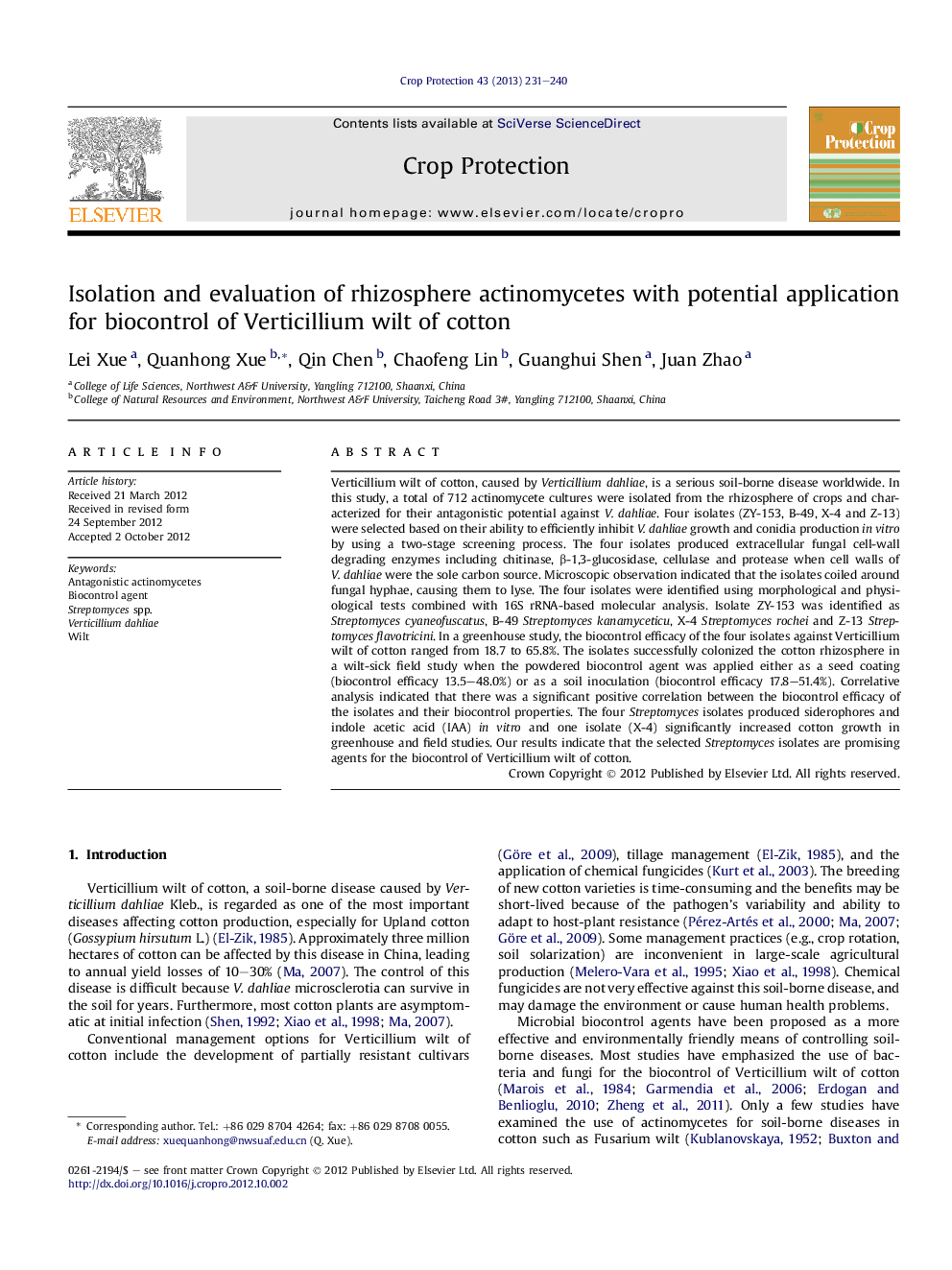| Article ID | Journal | Published Year | Pages | File Type |
|---|---|---|---|---|
| 4506124 | Crop Protection | 2013 | 10 Pages |
Verticillium wilt of cotton, caused by Verticillium dahliae, is a serious soil-borne disease worldwide. In this study, a total of 712 actinomycete cultures were isolated from the rhizosphere of crops and characterized for their antagonistic potential against V. dahliae. Four isolates (ZY-153, B-49, X-4 and Z-13) were selected based on their ability to efficiently inhibit V. dahliae growth and conidia production in vitro by using a two-stage screening process. The four isolates produced extracellular fungal cell-wall degrading enzymes including chitinase, β-1,3-glucosidase, cellulase and protease when cell walls of V. dahliae were the sole carbon source. Microscopic observation indicated that the isolates coiled around fungal hyphae, causing them to lyse. The four isolates were identified using morphological and physiological tests combined with 16S rRNA-based molecular analysis. Isolate ZY-153 was identified as Streptomyces cyaneofuscatus, B-49 Streptomyces kanamyceticu, X-4 Streptomyces rochei and Z-13 Streptomyces flavotricini. In a greenhouse study, the biocontrol efficacy of the four isolates against Verticillium wilt of cotton ranged from 18.7 to 65.8%. The isolates successfully colonized the cotton rhizosphere in a wilt-sick field study when the powdered biocontrol agent was applied either as a seed coating (biocontrol efficacy 13.5–48.0%) or as a soil inoculation (biocontrol efficacy 17.8–51.4%). Correlative analysis indicated that there was a significant positive correlation between the biocontrol efficacy of the isolates and their biocontrol properties. The four Streptomyces isolates produced siderophores and indole acetic acid (IAA) in vitro and one isolate (X-4) significantly increased cotton growth in greenhouse and field studies. Our results indicate that the selected Streptomyces isolates are promising agents for the biocontrol of Verticillium wilt of cotton.
► The application of rhizosphere actinomycetes to control Verticillium wilt of cotton was evaluated. ► Four isolates with high inhibitory activity against Verticillium dahliae were selected by a two-stage screening process. ► The four isolates were also characterized for their ability to produce cell-wall degrading enzymes, IAA, and siderophores. ► The four isolates were identified by their morphological characteristics as well as 16S rRNA sequencing. ► Greenhouse and field studies showed that these isolates could effectively reduced the incidence of cotton Verticillium wilt.
